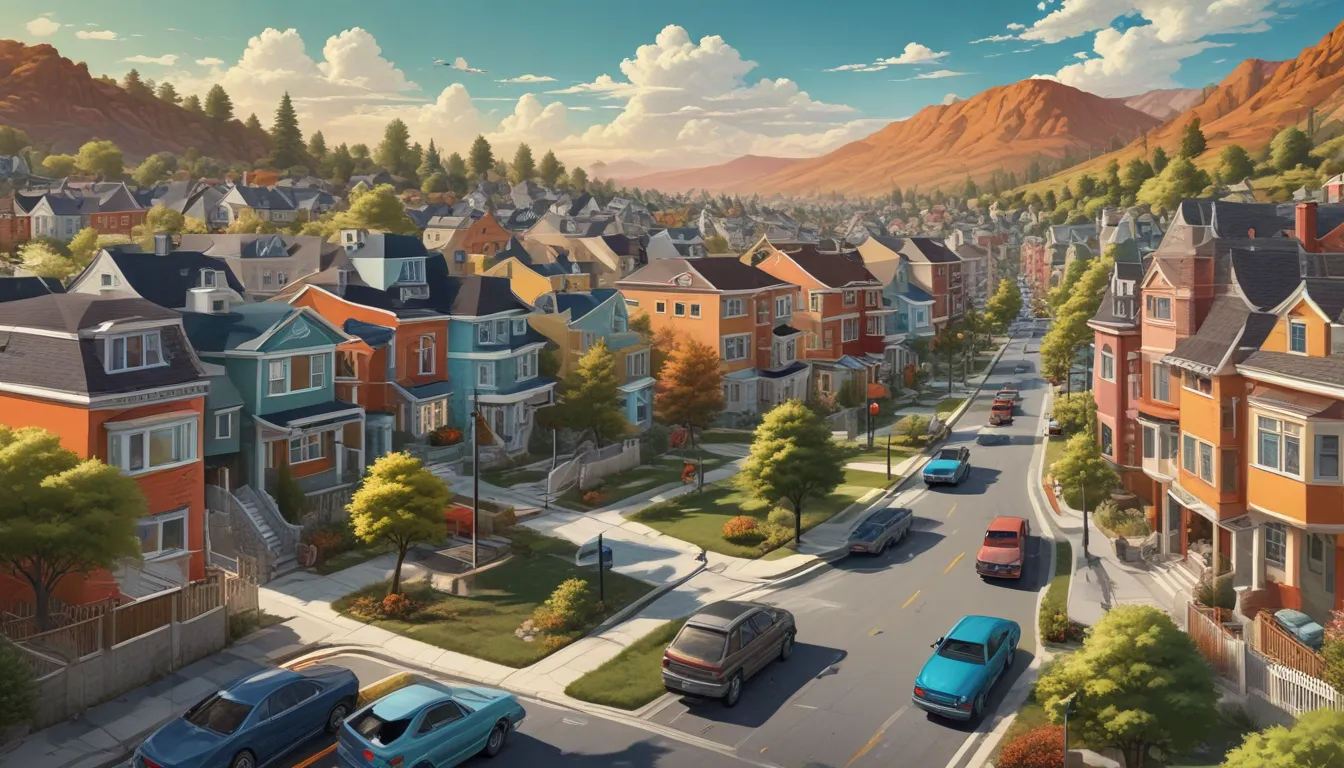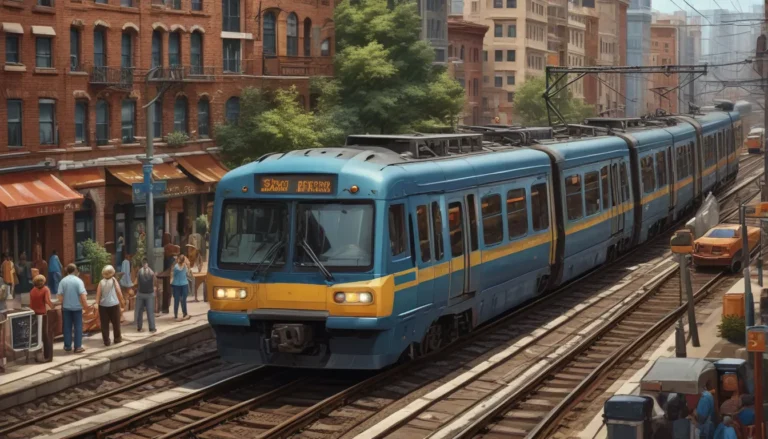A Note About Images: The images used in our articles are for illustration purposes only and may not exactly match the content. They are meant to engage readers, but the text should be relied upon for accurate information.
In today’s fast-paced world, suburbanization has become a defining characteristic of modern society, reshaping the way we live, work, and interact with our environment. This phenomenon has led to a rapid expansion of suburban areas, changing demographics, and strains on infrastructure, impacting both urban and suburban communities. In this article, we will delve into 14 unbelievable facts about suburbanization that shed light on its profound impact on our lives. From the origins of suburbanization to its social, environmental, and economic consequences, we will explore the fascinating world of sprawling suburbs and the forces that have fueled their growth.
Suburban Sprawl: Embracing Spacious Living
One of the most significant impacts of suburbanization is the rapid expansion of suburban areas, resulting in the development of extensive residential, commercial, and industrial spaces beyond the city limits. This suburban sprawl has transformed landscapes, creating self-contained communities with distinct identities and amenities.
The Rise of Car Culture: Navigating Suburban Roads
Suburbanization has been closely linked to the rise of car culture, with affordable automobiles and expanded road networks encouraging suburban residents to rely heavily on cars for transportation. This shift has not only impacted commuting patterns but also shaped the design and layout of suburban neighborhoods and infrastructure.
The Greenery Factor: Oasis of Nature in Suburbia
Contrary to popular belief, suburban areas can be surprisingly green, offering large yards, parks, and green spaces that promote a connection to nature. Suburbs often provide a more open and natural environment compared to densely populated urban areas, appealing to residents seeking a tranquil and scenic setting.
Affordable Housing: Making Suburbia Accessible
Affordability of housing is a significant driver of suburbanization, with suburban areas offering more affordable housing options than urban areas. This accessibility has attracted families and individuals looking for more space at a lower cost, leading to the rapid growth of suburban communities worldwide.
Diverse Demographics: Shifting Population Trends
The demographic makeup of suburbs has evolved over time, transitioning from predominantly white middle-class families to more diverse communities with increasing minority populations and immigrant residents. This demographic shift has brought cultural richness and diversity to suburban areas, enriching the social fabric of these communities.
Expansion of Retail Spaces: Retail Therapy in the Suburbs
Suburbanization has spurred the proliferation of shopping malls and retail centers to cater to the growing suburban population’s shopping needs. Retailers have capitalized on the demand for convenient shopping destinations, creating expansive retail spaces that offer a wide range of products and services.
Strains on Infrastructure: Meeting the Needs of a Growing Population
The rapid growth of suburban areas has placed a strain on infrastructure, leading to challenges such as overcrowded roads, overwhelmed schools, and healthcare facilities. Meeting the evolving needs of a growing population requires strategic planning and investment in infrastructure to ensure sustainable development.
Environmental Impact: Balancing Development and Conservation
The expansion of suburbs has had a significant environmental impact, including habitat loss, increased pollution from cars, and higher energy consumption. Sustainable suburban development practices are essential to mitigate these environmental effects and promote a harmonious relationship between human activities and natural ecosystems.
Social Dynamics: Redefining Community in Suburbia
Suburbanization has reshaped social dynamics, with the rise of gated communities, private amenities, and neighborhood associations altering the sense of community traditionally found in urban neighborhoods. These changes reflect evolving preferences for privacy, exclusivity, and customized lifestyle experiences in suburban settings.
Impact on Urban Areas: Ripples of Change Across Cities
Suburbanization has not only transformed suburbs but also had a significant impact on urban areas, challenging their economic vitality and development. The migration of residents, businesses, and resources to the suburbs has reshaped city landscapes and spurred urban revitalization efforts to adapt to changing demographic and economic trends.
Commuting Challenges: Navigating Suburban Roads and Rails
Long commutes have become a common challenge in suburban areas, as more people live outside the city and commute to urban centers for work. Traffic congestion and lengthy commuting times pose logistical and quality-of-life challenges for suburban residents, highlighting the importance of efficient transportation systems and infrastructure planning.
Rise of Suburban Amenities: Enriching Lifestyle Choices
Suburban areas offer a diverse range of amenities tailored to meet the needs of families, including larger homes with yards, parks, schools, and recreational facilities. These amenities contribute to a high quality of life and appeal to individuals seeking a quieter, family-friendly environment in suburban communities.
Impact on Public Transportation: Nurturing Mobility in Suburbia
Suburbanization has influenced public transportation systems, increasing the demand for effective transit options in suburban areas. The expansion of suburban bus routes and commuter train services has enhanced mobility and connectivity between suburban communities and urban centers, improving access to employment, education, and leisure opportunities.
Evolution of Suburban Lifestyle: Embracing Diversity and Vibrancy
The perception of suburban living has evolved over the years, with suburbs now offering a diverse range of cultural, entertainment, and dining options that rival urban counterparts. Suburban communities have transformed into vibrant hubs of activity, attracting a wide range of individuals and families seeking a balanced lifestyle that combines the benefits of city and suburban living.
These 14 unbelievable facts about suburbanization illuminate the multifaceted impacts of this global phenomenon, shaping our modern world and influencing the way we interact with our surroundings. From environmental sustainability to social dynamics, suburbanization continues to play a pivotal role in urban development and community planning, creating opportunities for growth, innovation, and collaboration.
In conclusion, suburbanization represents a dynamic and evolving process that has reshaped societal norms, economic landscapes, and urban environments. While it brings both benefits and challenges, understanding the complexities of suburbanization is crucial for fostering sustainable and thriving communities that balance growth with environmental stewardship and social inclusivity.
FAQs
- What is suburbanization?
Suburbanization is the process of population and economic growth expanding from urban areas into suburban regions, resulting in the development of residential areas, businesses, and infrastructure outside city limits.
- What are the main reasons for suburbanization?
The main reasons for suburbanization include affordability of housing, access to larger homes and yards, improved transportation options, better schools and amenities, and a desire for a quieter and more family-friendly lifestyle.
- How has suburbanization affected urban areas?
Suburbanization has impacted urban areas by leading to population and economic shifts, challenges in infrastructure planning, and urban revitalization efforts to adapt to changing demographic trends and preferences.
- What are the environmental impacts of suburbanization?
Suburbanization has contributed to habitat loss, increased energy consumption, higher pollution levels, and land consumption. Sustainable development practices are essential to mitigate these environmental impacts and promote a healthy balance between human activities and natural ecosystems.
- Is suburbanization a global phenomenon?
Yes, suburbanization is a global phenomenon observed in many countries worldwide, with varying patterns and impacts shaped by local contexts and cultural preferences.
Our commitment to delivering accurate and engaging content is rooted in our dedication to quality and authenticity. The insights shared on our site are contributed by real users, ensuring diverse perspectives and reliable information. Each fact is meticulously reviewed by our editors to uphold the highest standards of credibility and relevance. Trust in our commitment to providing valuable and trustworthy content as you explore the intriguing world of suburbanization and its transformative effects on modern society.






